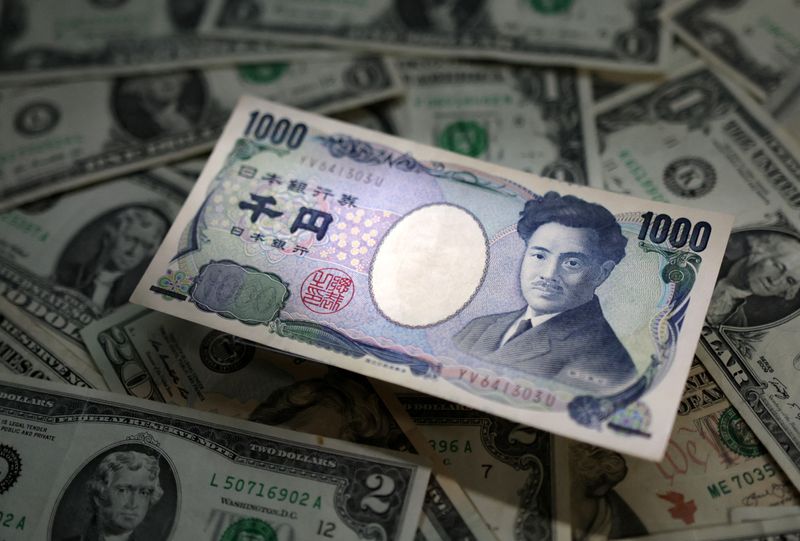Yen drops, dollar on defensive as central banks seek to reassure markets
2023.03.19 22:36

© Reuters. FILE PHOTO: Japanese Yen and U.S. dollar banknotes are seen in this illustration taken March 10, 2023. REUTERS/Dado Ruvic/Illustration
By Kevin Buckland
TOKYO (Reuters) – Currency markets showed some cautious optimism after global authorities moved to stem contagion from a simmering banking crisis, with the safe haven dollar on the back foot and the yen tumbling amid a rebound in Treasury yields.
The risk-sensitive Australian dollar jumped to a two-week high, while the euro edged higher for a third straight day.
Over the weekend, the Federal Reserve, European Central Bank, Bank of England, Swiss National Bank, Bank of Canada and Bank of Japan announced joint action to enhance market liquidity. That followed Swiss authorities’ negotiation of a buyout of Credit Suisse by UBS, but at a huge discount and with massive debt writedowns.
The currency market’s “initial response has been a ‘risk positive’ one,” Ray Attrill, head of foreign-exchange strategy at National Australia Bank (OTC:) wrote in a note to clients, pointing to the yen’s slide and ‘s rebound in particular.
The yen dived 0.6% to 132.59 per dollar as 10-year Treasury yields jumped 12 basis points to 3.52% to start the week, pulling away from the low of 3.369% from Thursday.
Japan’s currency had gained 2.5% last week.
The dollar was overall weaker as well.
The euro added 0.17% to $1.06885 and sterling edged 0.1% higher to $1.2190.
The Australian dollar climbed 0.3% to $0.6721, and earlier touched $0.6743 for the first time since March 7.
Although the banking system is the currency markets’ most immediate focus, a Fed rate-setting meeting on Wednesday looms large. Traders are still of the view that a quarter point hike is likely, even though the global banking sector remains susceptible to contagion risks.
That said, money markets are now positioned for a peak in rates in May at around 4.79%, and then 72 basis points of declines until the end of the year.
“Renewed – and rising – confidence in the Fed cutting rates this year and well ahead of any other central bank is evidently in the driving seat for now,” NAB’s Attrill wrote.
“Doubtless if risk aversion develops a much bigger head of steam, this would then come to dominate USD price action.”
In cryptocurrencies, bitcoin took a breather after its surge to a nine-month high of $28,474 on Sunday. It last changed hands at $27,888.
Gold declined 0.8% to around $1,972 an ounce.








